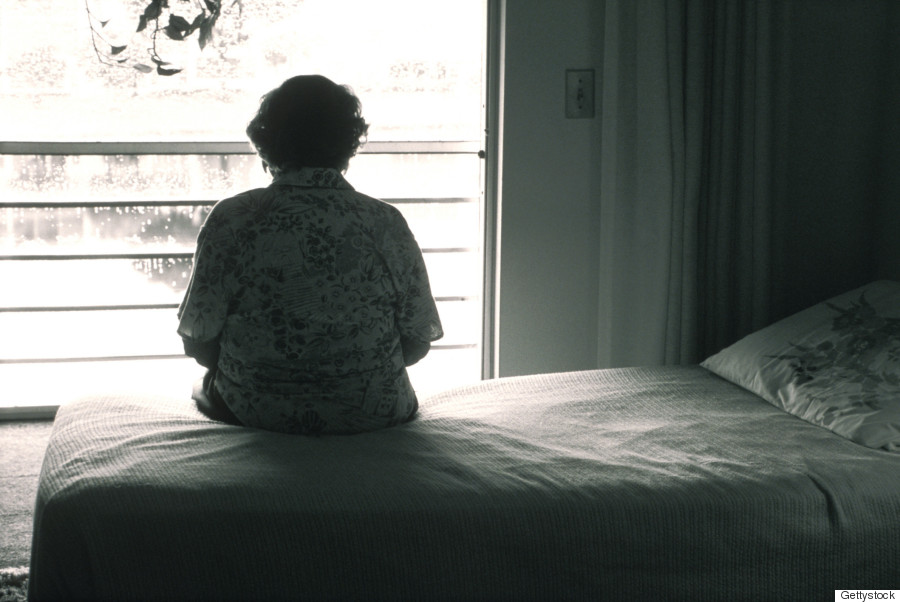Why So Many Domestic Violence Survivors Don't Get Help — Even When They Ask For It
By : Huffington Post | Category : Divorce News | Comments Off on Why So Many Domestic Violence Survivors Don't Get Help — Even When They Ask For It
11th Jun 2015

On Sept. 10, 2014, a woman arrived at a domestic violence program in Nevada desperately seeking emergency shelter. She had been living in her car with her four kids for two weeks, she said, hiding from an abusive partner.
The program turned her away. Its shelter was too full.
Her plea was just one of almost 11,000 requests for help that were denied that day because of a lack of funding, according to a report released Monday by the National Network to End Domestic Violence.
Each year, the organization does a one-day survey of domestic violence programs nationwide to calculate how many people are accessing help and what services they need. Almost 90 percent of domestic violence programs in the U.S. participated in the 2014 census.
The result is a heartbreaking snapshot of the lack of domestic violence services in the United States, a country where 1 in 4 women are estimated to experience domestic violence and three women are killed in a domestic homicide on average each day.
Over the course of a single day last year, 67,646 adults and children received help from local domestic violence programs. But during that same 24-hour period, 10,871 other requests were not met because advocates did not have enough resources.
While the findings were consistent with the last few years of the census, advocates say it’s simply more evidence that federal funding for domestic violence services is at an unacceptably low level — a predicament with a devastating human cost.
“Without a disruptive amount of funding, not just a little bit more every year, but an actual disruptive change — double the money we are currently getting, triple the money — we are not going to see an increase in services and a decrease in unmet requests,” said Cindy Southworth, executive vice president of the National Network to End Domestic Violence. “Victims are going to continue to be turned away unless Congress truly prioritizes victims of domestic violence as a public health, public safety crisis.”
Of the 10,871 requests for help that were not met, over half were for housing.
“When funding is scarce, one of the first things that local programs are forced to cut are the most expensive services, which are typically going to be your shelter services and transitional housing,” Southworth said. “They are extremely expensive to offer, with rent, utilities and heat.”
Advocates say that emergency shelter and housing are critically important for survivors to safely escape abusive relationships.
“In an ideal world, the victims would be able to stay in their own homes and live without fear, but unfortunately that is not possible,” Southworth said. “The most dangerous time for victims of domestic violence is when they are leaving the abusive partner or soon after. More homicides occur during that window than during any other time.”
Southworth said many women escape with only the clothes on their backs, and may not have access to money to pay for accommodations. Women may be subject to financial abuse, a common tactic used to control victims, which can make it even more difficult to leave. If a woman has been isolated — another hallmark of abusive relationships — she may lack a support system to assist her.
“There has to be that safe place to flee to,” Southworth said, otherwise women may find themselves in extreme danger or even homeless. Research shows that domestic violence is a leading cause of homelessness for women and their children across the nation.
The second-most common request for help that was not met was for legal representation.
Survivors of domestic violence often face complex legal proceedings when leaving an abusive relationship, Southworth said. They may need to get a divorce, file for custody, get a protection order or pursue criminal charges. A woman may also need legal assistance to ensure her abuser does not have illegal access to firearms, depending on what state she lives in.
Navigating the court system can be confusing and overwhelming, especially if a survivor is struggling with high levels of stress, PTSD and in some cases, traumatic brain injury from head assaults.
“We know that victims need attorneys, and if they don’t have them they end up in dire straits when they go to court,” Southworth said.
Only 11 percent of programs across the country reported being able to offer legal representation. Over the last year, 74 programs reduced or eliminated their legal advocacy offerings and 66 reduced or entirely cut their legal representation services.
According to the domestic violence programs that were surveyed, 28 percent of the unmet requests were caused by reduced government funding. Southworth said that when adjusted for inflation, federal funding for local domestic violence shelters has flatlined since 2007.
“My heart breaks each and every time I have to tell a courageous survivor that we don’t have a safe place for her family to sleep, an attorney to help her file for a desperately needed protection order or a children’s counseling session to debrief the nightmares her child saw at home,” Southworth said. “I know times are tough, but women are dying.”
Need help? In the U.S., call 1-800-799-SAFE (7233) for the National Domestic Violence Hotline.
Want to get involved? Here’s what you can do to help.
Contact reporter Melissa Jeltsen at melissa.jeltsen@huffingtonpost.com.
Read the whole report below, or see a breakdown by state.
— This feed and its contents are the property of The Huffington Post, and use is subject to our terms. It may be used for personal consumption, but may not be distributed on a website.
Online Case Evaluation
Blog Topics
- Divorce matters (3)
- Divorce News (720)
- Miscellaneous family law matters (1)
- Modification matters (1)
- Video (2)


